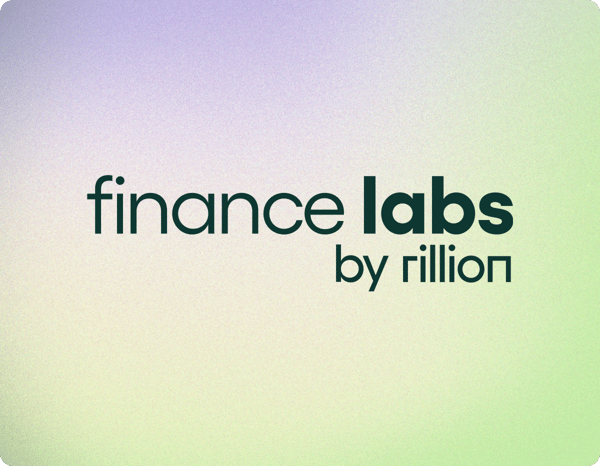

Are you looking to enhance your financial operations and reduce manual workloads? Automated invoice processing offers a powerful solution for businesses seeking to streamline their accounts payable functions. By leveraging this technology, organizations can improve efficiency, accuracy, and overall financial management.
In this Rillion guide, we’ll explore the key benefits of automated invoice processing, supported by real-world examples from companies that have successfully made the transition. With the right approach, your organization can reap the rewards of automation and transform its financial workflows.
What is Automated Invoice Processing?
Automated invoice processing is a technology-driven approach that streamlines the handling of invoices from receipt to payment, reducing manual intervention and enhancing efficiency. This process typically involves the use of tools and software that leverage technologies such as Optical Character Recognition (OCR), artificial intelligence (AI), and machine learning to automate various tasks associated with invoicing.
Key Components of Automated Invoice Processing
Data Extraction: Automated systems use OCR to capture data from invoices, converting printed or handwritten text into digital format. This includes key information such as vendor details, invoice numbers, dates, and amounts.
By implementing automated data capture, Perryman experienced substantial improvements in efficiency, leading to a marked decrease in both the time required for processing and the errors typically associated with manual data entry. This transition allowed team members to redirect their focus toward more strategic tasks, enhancing overall productivity.
Validation: Once the data is extracted, automated systems validate it against pre-set rules, such as matching invoices with purchase orders or receipts. This helps to ensure accuracy and compliance with internal controls.

Workflow Automation: Automated invoice processing often includes predefined workflows that route invoices for approval. This minimizes delays and ensures that invoices are processed in a timely manner.
Payment Processing: After approval, the system can initiate payment automatically, either through integration with accounting software or payment platforms, facilitating quicker and more accurate transactions.
Companies like Smiles First, a healthcare firm, have reported that automation alleviated the workload of their accounts payable team, allowing them to focus on strategic initiatives.
Reporting and Analytics: Automated systems provide real-time insights into invoice processing metrics, allowing businesses to track performance, manage cash flow, and identify trends in spending.

10 Benefits of Automated Invoice Processing
1. Increased Efficiency and Speed
Automating invoice processing eliminates time-consuming manual tasks, such as data entry and invoice validation, allowing invoices to be processed, validated, and matched to purchase orders within seconds.
For example, healthcare firm Smiles First found that automating AP significantly eases the workload for their accounts payable team, speeding up their entire process and allowing team members to focus on other priorities. This led to quicker payment cycles and more productive workflows.
2. Integration with Existing Systems
Automated solutions like Rillion integrate seamlessly with existing ERP and accounting systems, reducing disruption and enabling smooth, consistent data flow across financial platforms.
For companies like Tacala, a Taco Bell franchise operator managing over 300 locations, automated their AP processes across all sites. This solution offered a seamless fit, allowing them to optimize AP operations without overhauling their infrastructure.
3. Reduced Errors and Improved Accuracy
Manual data entry is prone to errors, which can result in costly invoice mismatches and duplicate payments. By using AI-driven tools, automation ensures that invoice data is accurately extracted and validated. Data capture accuracy with an automation solution significantly reduces the need for rework and prevents duplicate payments.
Read also: How to Implement AI Invoice Processing: Best Practices for Success
4. Cost Savings
The operational costs associated with manual invoice processing, such as paper handling, storage, and the time spent on data entry, can add up. Automation greatly reduces these costs by eliminating most manual steps.
For example, Technopolis, a real estate management firm, achieved high levels of AP automation, including AI-powered tools that lowered their costs and increased efficiency.
5. Enhanced Compliance and Security
Automated systems maintain comprehensive audit trails, documenting every action taken in the invoice process. With customizable workflows, they also support compliance with regulatory standards and enable secure data storage and access control. It provides full visibility into every invoice’s journey, simplifying audit preparation and ensuring sensitive financial data remains well-protected.
6. Improved Vendor Relationships
Prompt and accurate payments foster trust and improve relationships with suppliers. Automation prevents delays in payment cycles, thus avoiding late fees and supporting a more reliable payment schedule. Using automated invoice systems helps to speed up payment cycles, strengthening your company’s relationships with key vendors and reducing costs related to late payments.
7. Greater Visibility and Control
Automated solutions offer real-time insights into the AP process, enabling finance teams to monitor and manage invoices from a central dashboard. This visibility allows for quicker approvals and faster resolution of any issues that arise. With automated systems, large construction companies can gain real-time control over their AP workflows, enabling better cash flow management and more accurate financial forecasting.
8. Scalability
Automation is inherently scalable, allowing AP departments to manage increasing invoice volumes without additional headcount. This feature is especially useful for companies experiencing seasonal or project-based invoice spikes. It lets them efficiently manage high invoice volumes during peak times, maintaining control and consistency in AP without needing additional resources.
9. Supports Strategic Decision-Making
Automated invoice processing generates valuable data that can reveal spending patterns and potential areas for cost savings. By analyzing this data, businesses can make more informed, data-driven decisions.
Companies that have used this solution found that the data insights provided have helped their leadership team better control costs and gain a clearer view of the company’s financial health, aiding in future planning and strategic decision-making.
10. Handles Industry-Specific Complexities
Automation solutions like Rillion are flexible enough to manage industry-specific needs and regulatory requirements. Companies like Touhula Daycare leveraged AP automation to handle the unique complexities of their industry’s financial workflows, resulting in a streamlined, error-free system that aligns with regulatory demands.
Transform Your Invoice Processing with Automation
The benefits of automated invoice processing are clear, from enhanced efficiency to cost savings. By examining real-world examples, it’s evident that automation not only streamlines operations but also contributes to better employee satisfaction and financial accuracy. For businesses considering this transition, the potential improvements in productivity and savings make automated invoice processing an essential investment.
Ready to elevate your financial operations? Check out our blog for more insights, and book a demo to discover how Rillion can help you enjoy the benefits of automated invoice processing!

